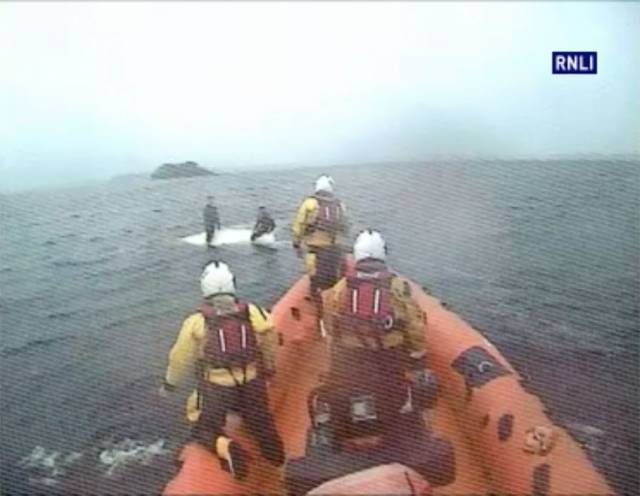#RNLI - Lough Ree RNLI was called to assist two sailors when their 17ft Fireball dinghy was holed and began to sink on Lough Ree on Saturday evening (15 July).
The crew of Lough Ree lifeboat The Eric Rowse were alerted by the Irish Coast Guard at 7pm when the sailors called for assistance over their portable VHF radio.
The Fireball was sinking after the rudder bracket broke away from the hull, causing the buoyancy tanks to fill with water.
Weather conditions at the time was wet and windy, with a Force 4-5 breeze, frequent showers and moderate visibility.
The lifeboat crew were on scene within minutes and recovered the two sailors, who had capsized the boat in order to slow the filling of the buoyancy tanks.
After establishing that both men were uninjured, the lifeboat crew and the sailors proceeded to turn the dinghy upright and lower the sails, and then towed it to the nearest island.
On reaching Beam Island, the five baled the water out of the dinghy and examined the damage to the hull, before towing the vessel to Lough Ree Yacht Club where it was recovered from the water.
Lough Ree RNLI helm Stan Bradbury said: “We were very happy to assist these experienced sailors when they ran into difficulty on the lake.
“Equipment failure can, and does, happen at unexpected times; these two had taken the necessary precautions before leaving shore, and followed the correct procedures to achieve a good outcome if anything went wrong.
“Calling for assistance early, before you become excessively cold or tired, is the best course of action if you find yourself in difficulty on the water.”
Saturday’s callout came days after an exceptionally busy week for the Midlands lifeboat crew, in which they assisted 30 people on seven vessels over a five-day period.
































































